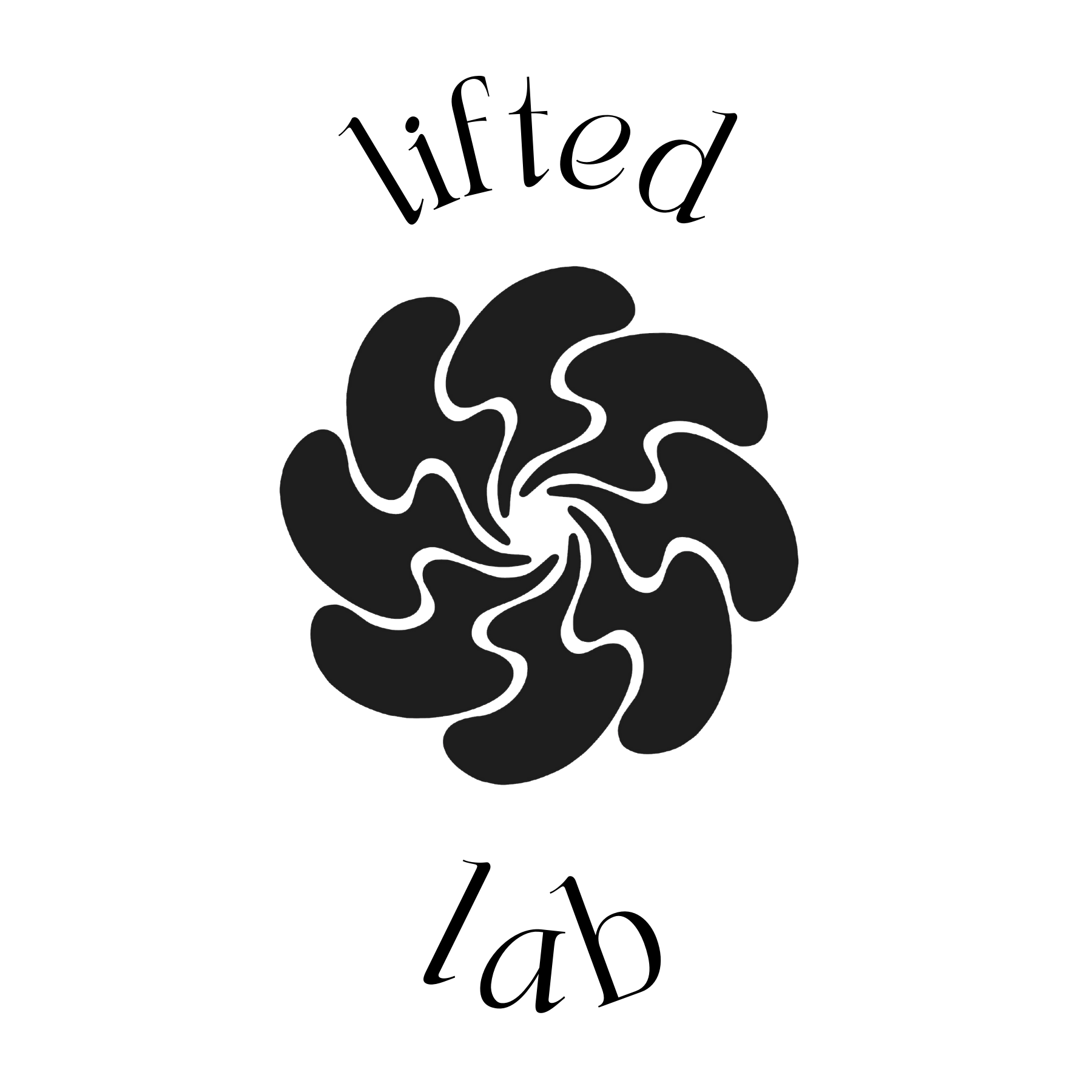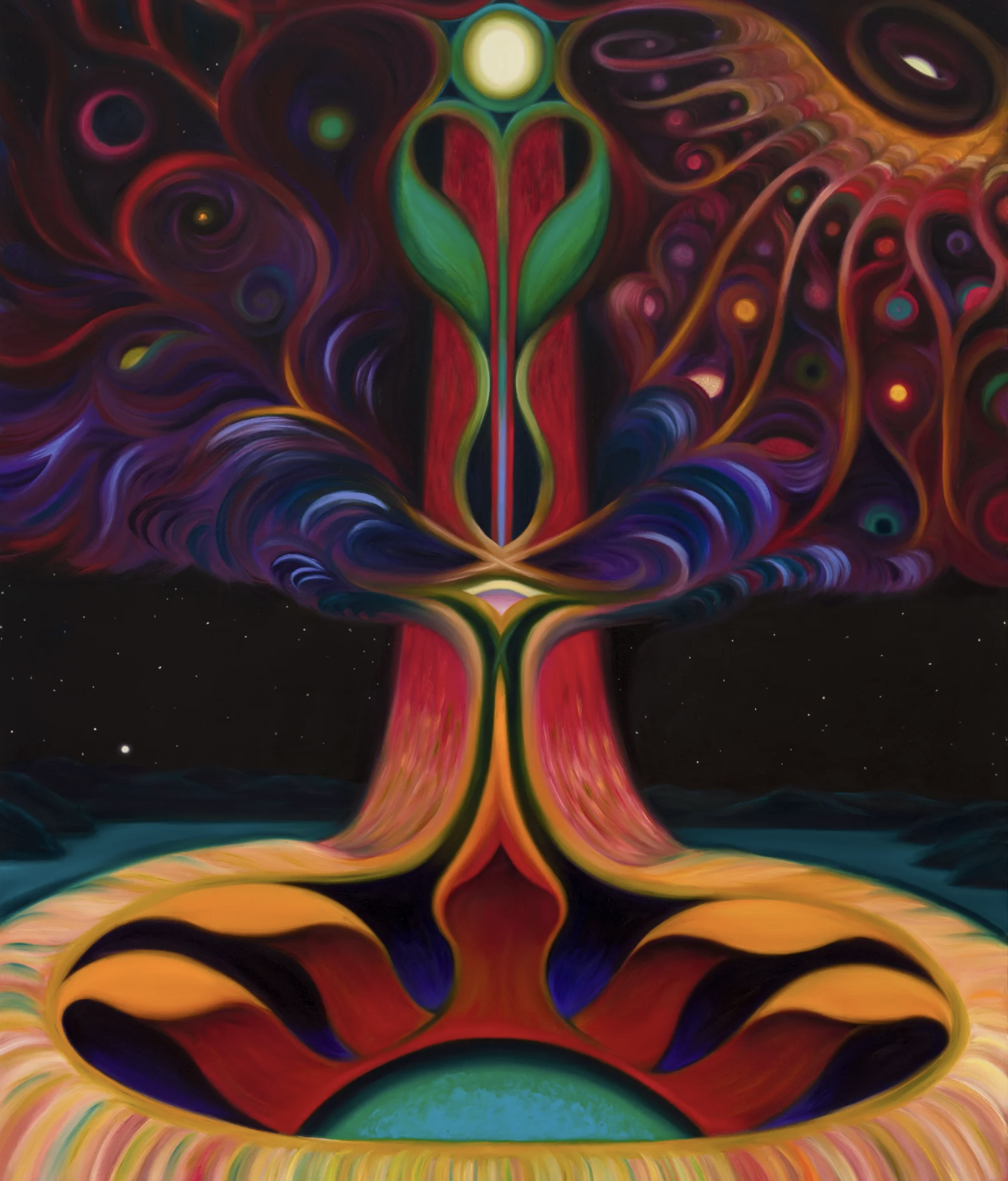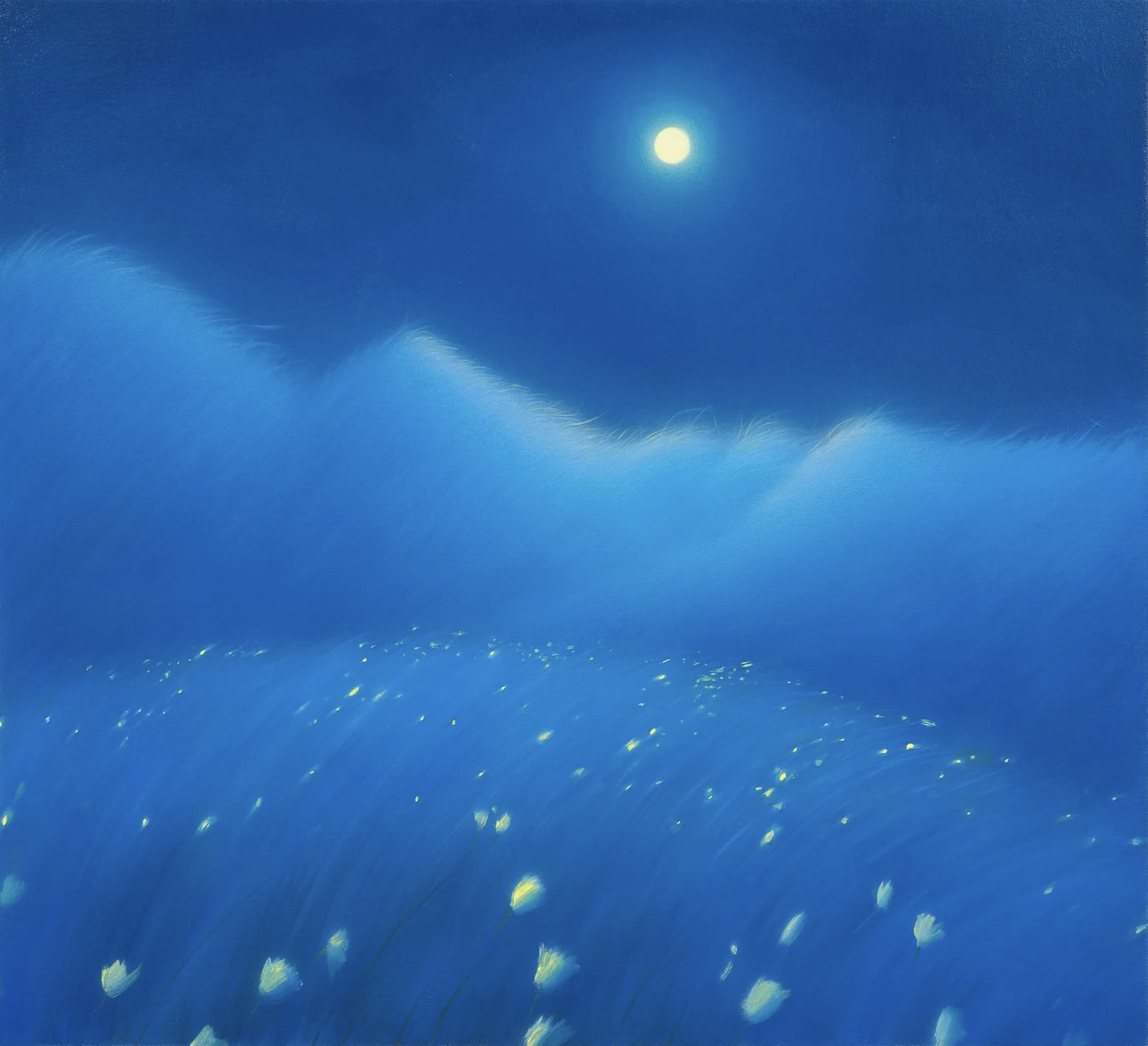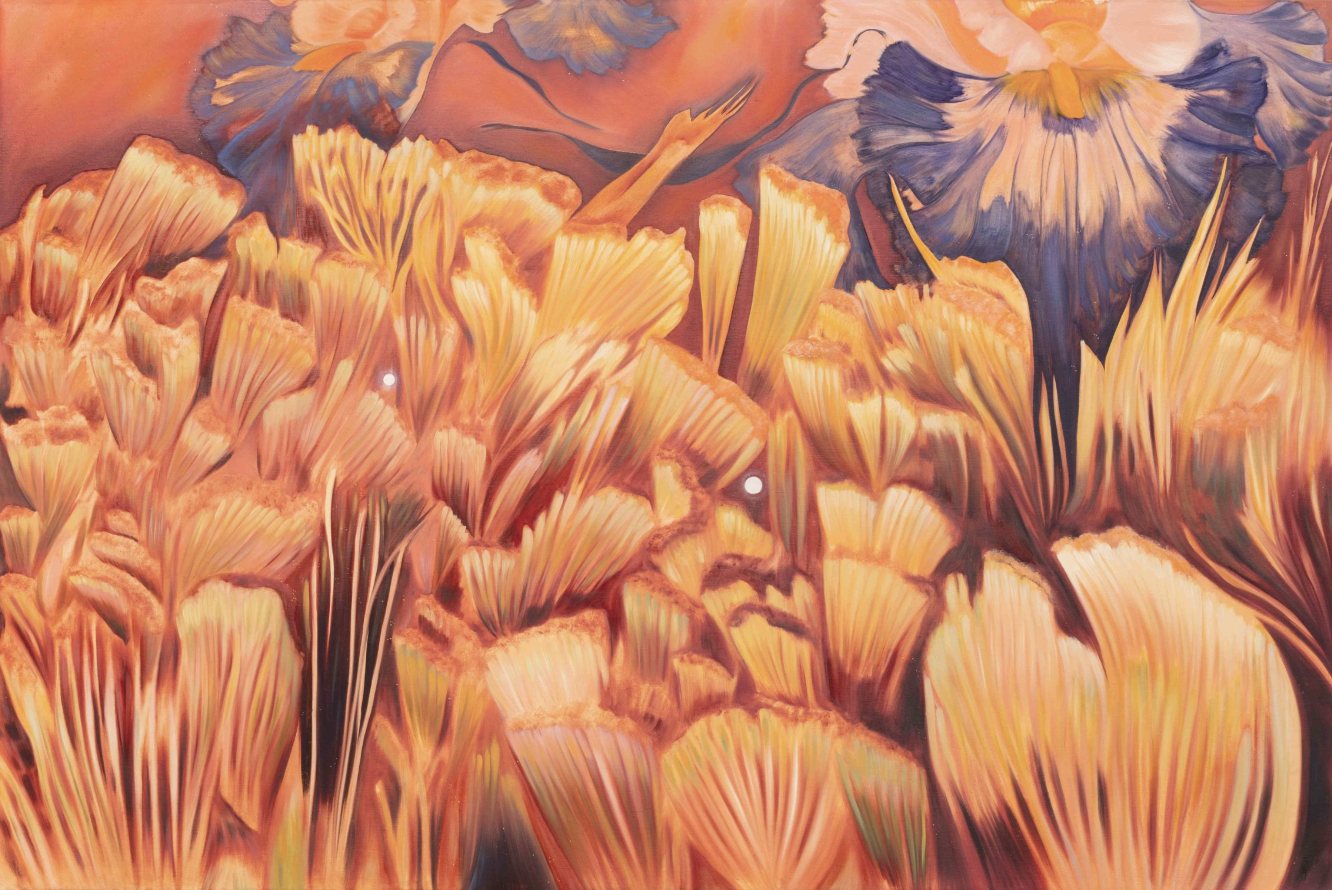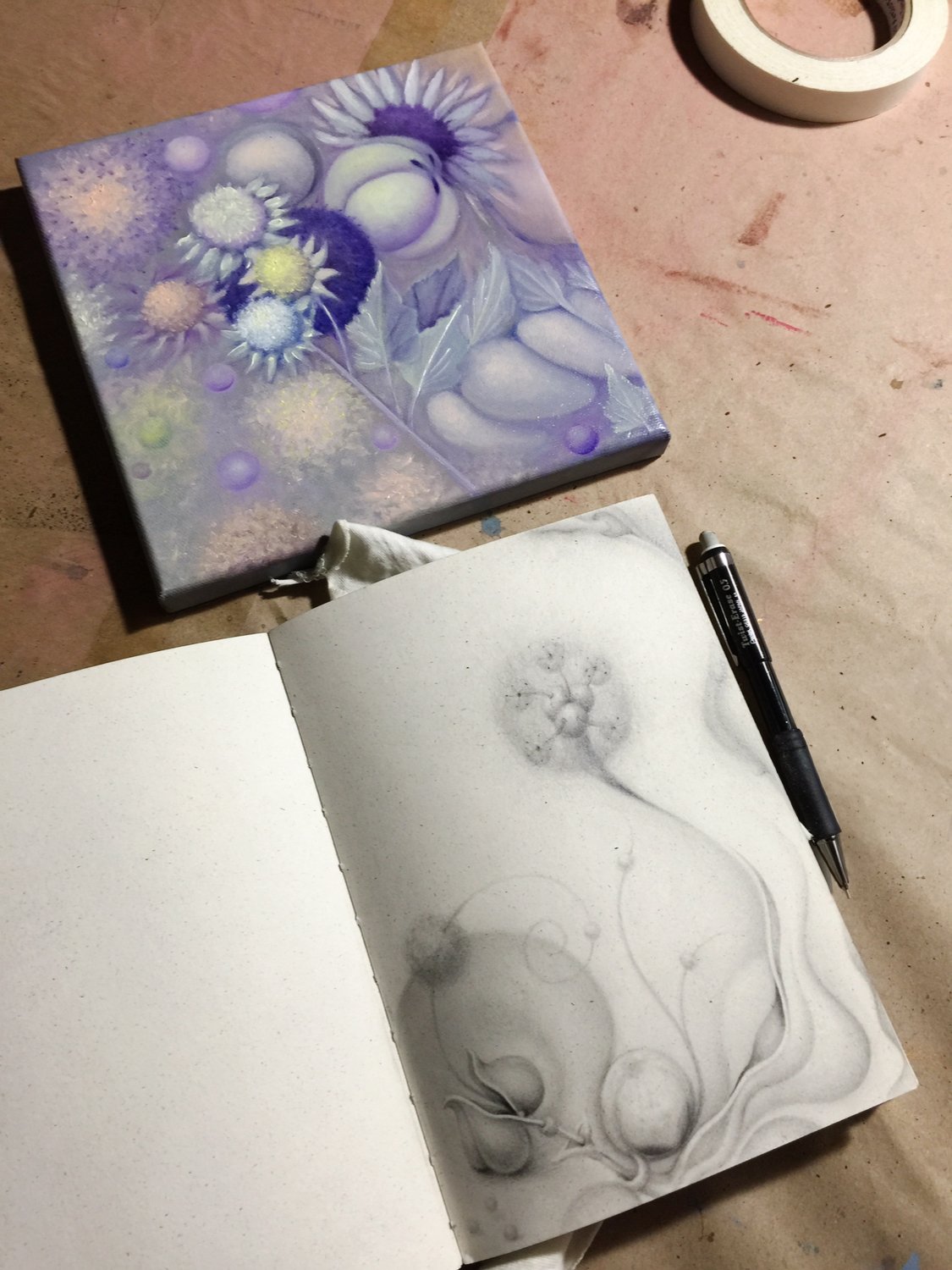Rithika Merchant: Terraformation
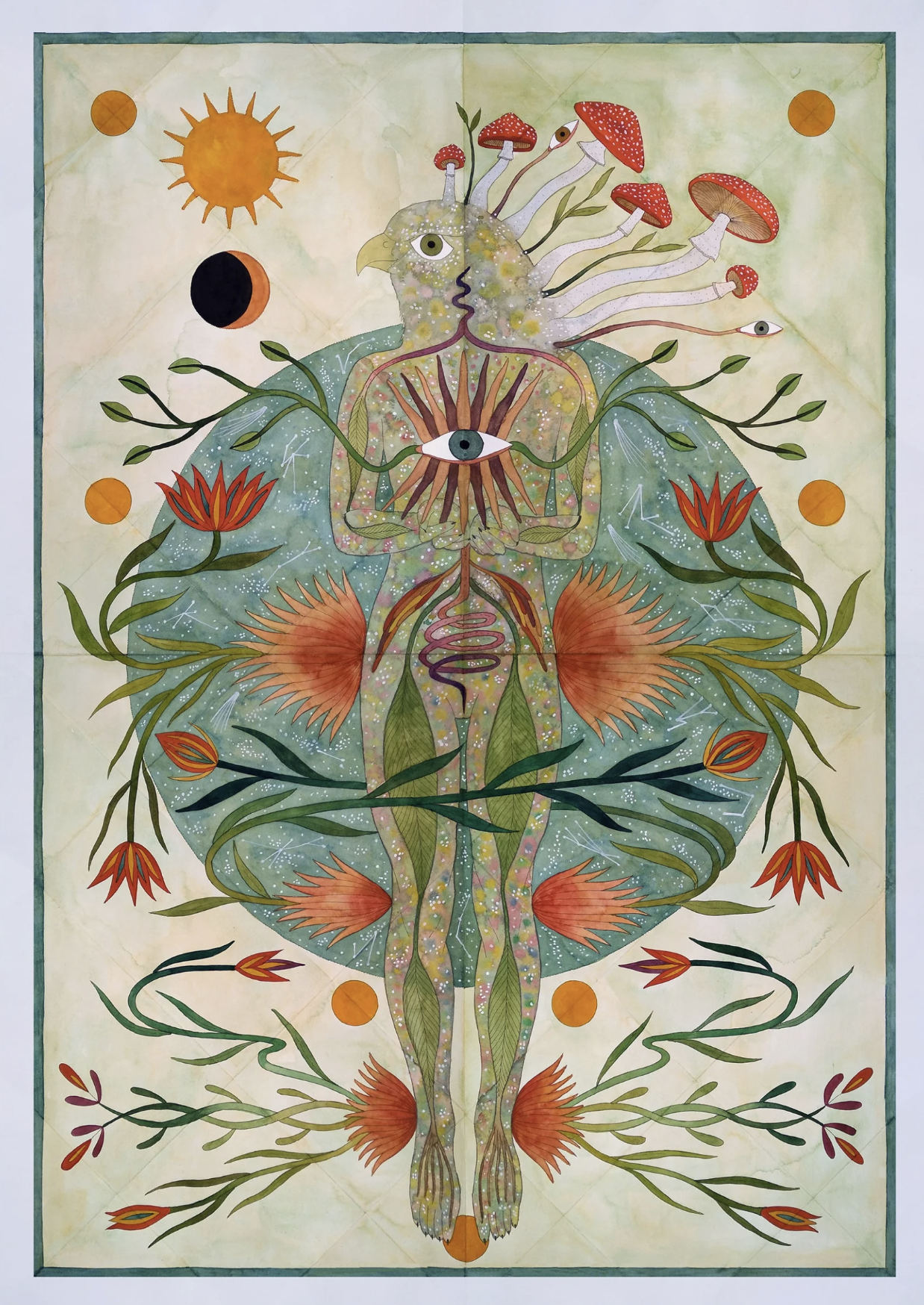
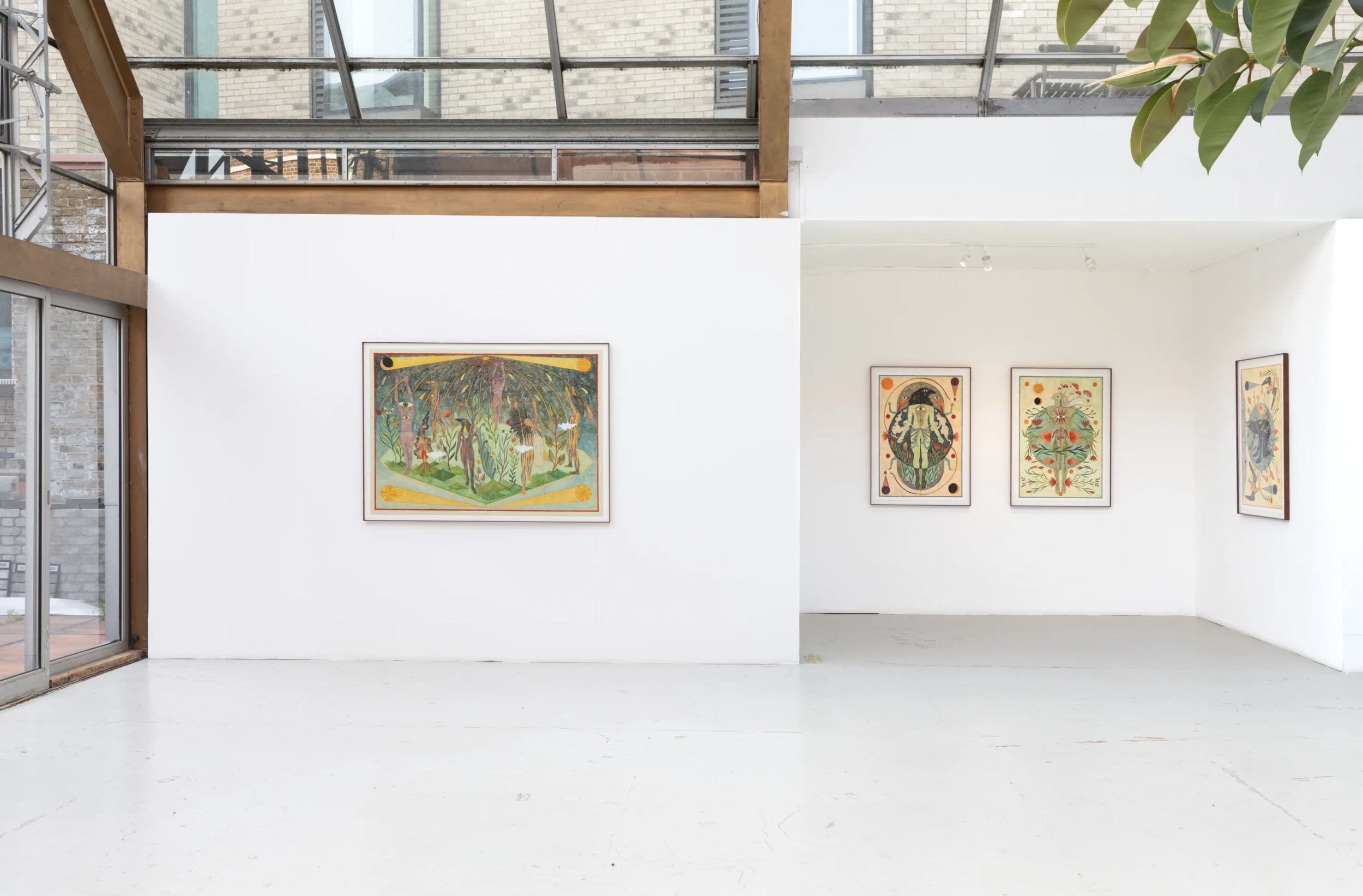
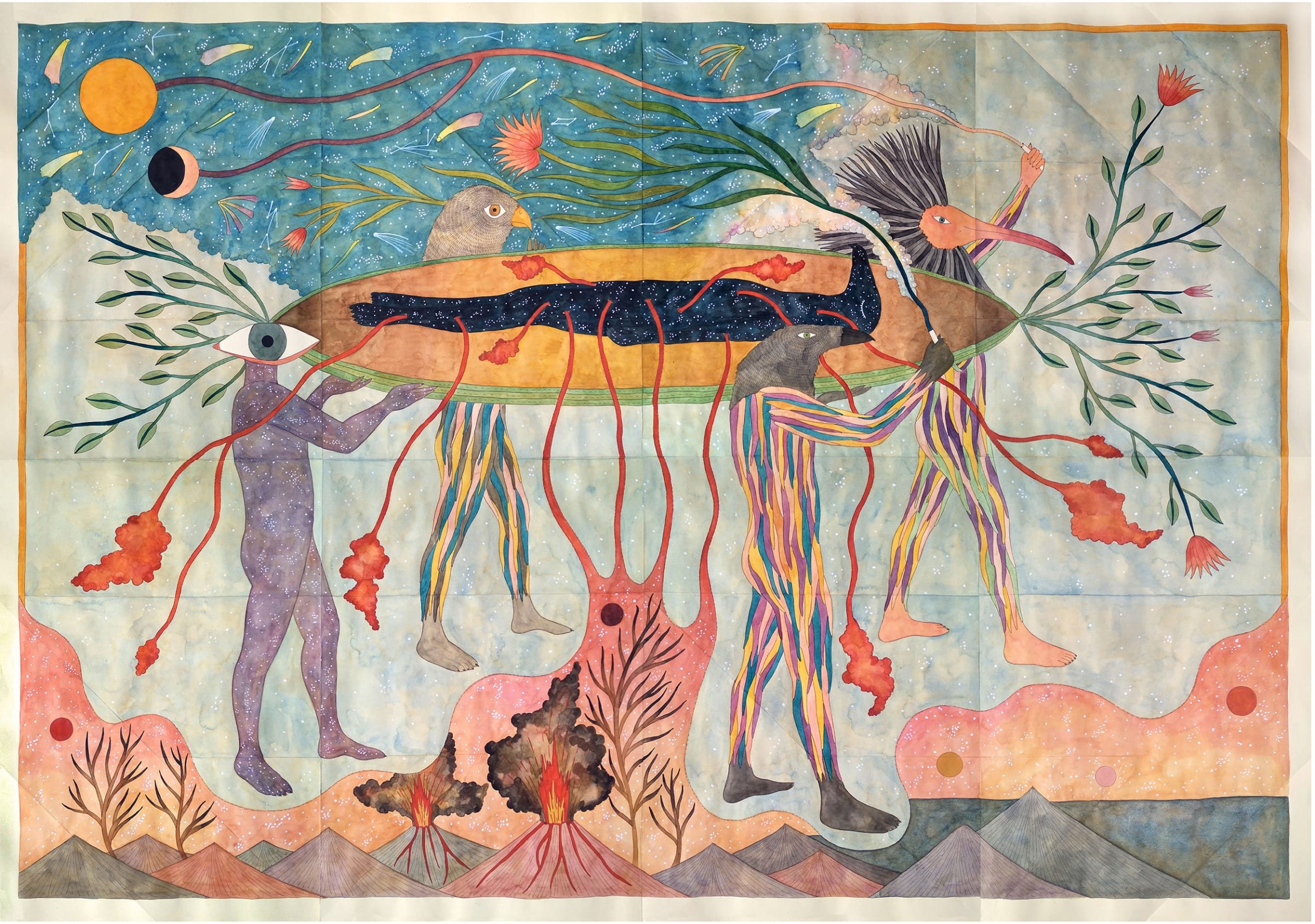
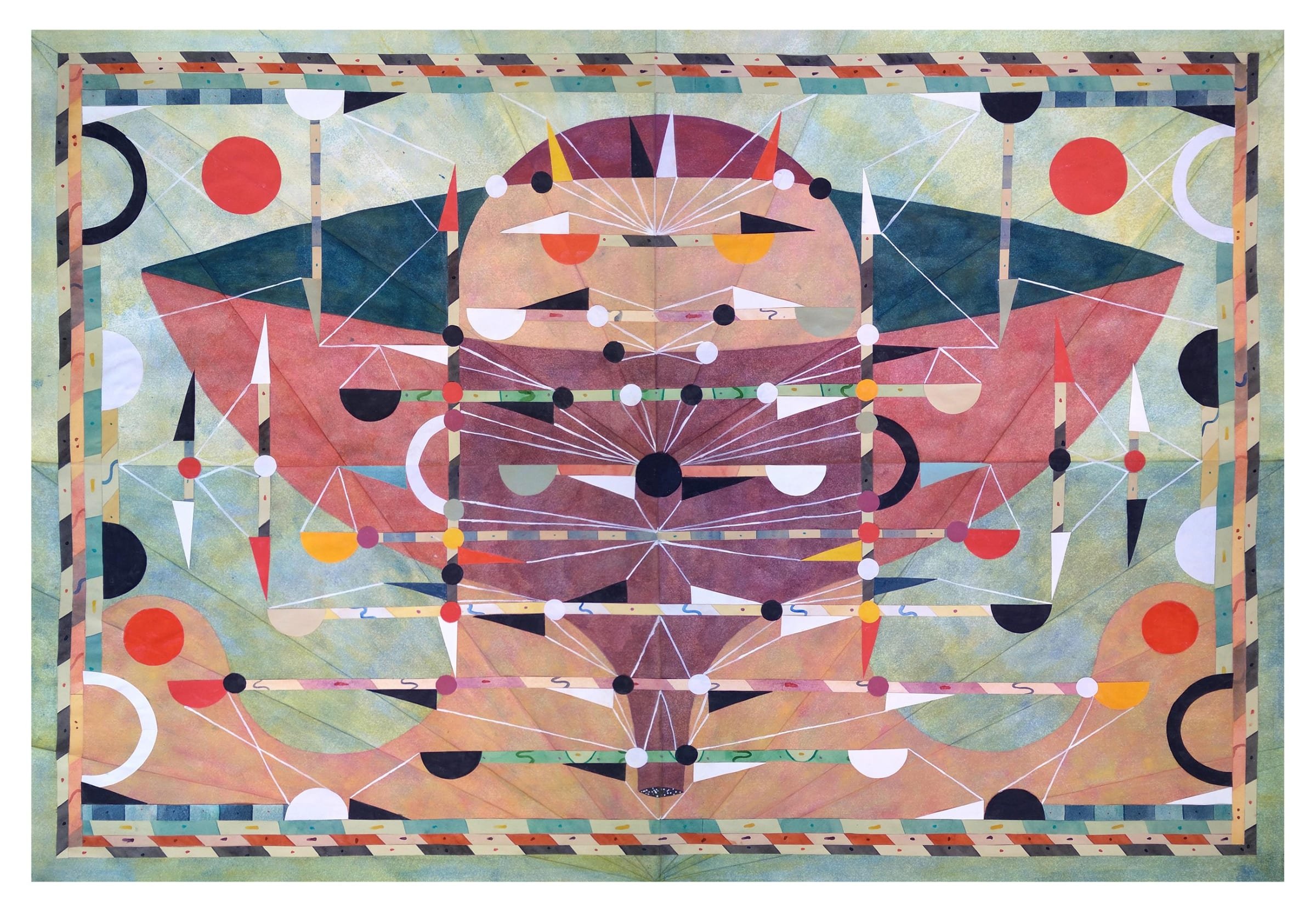
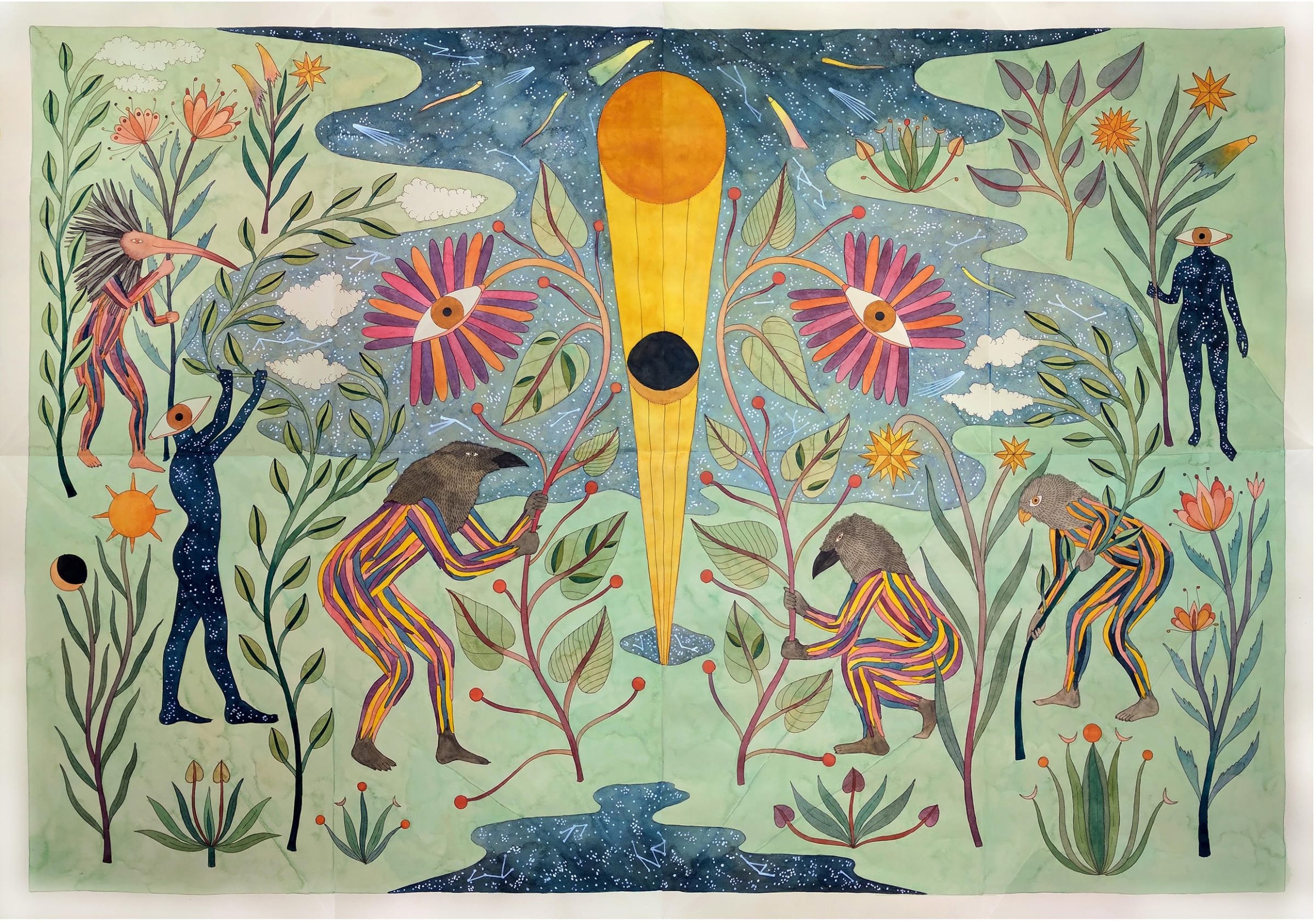
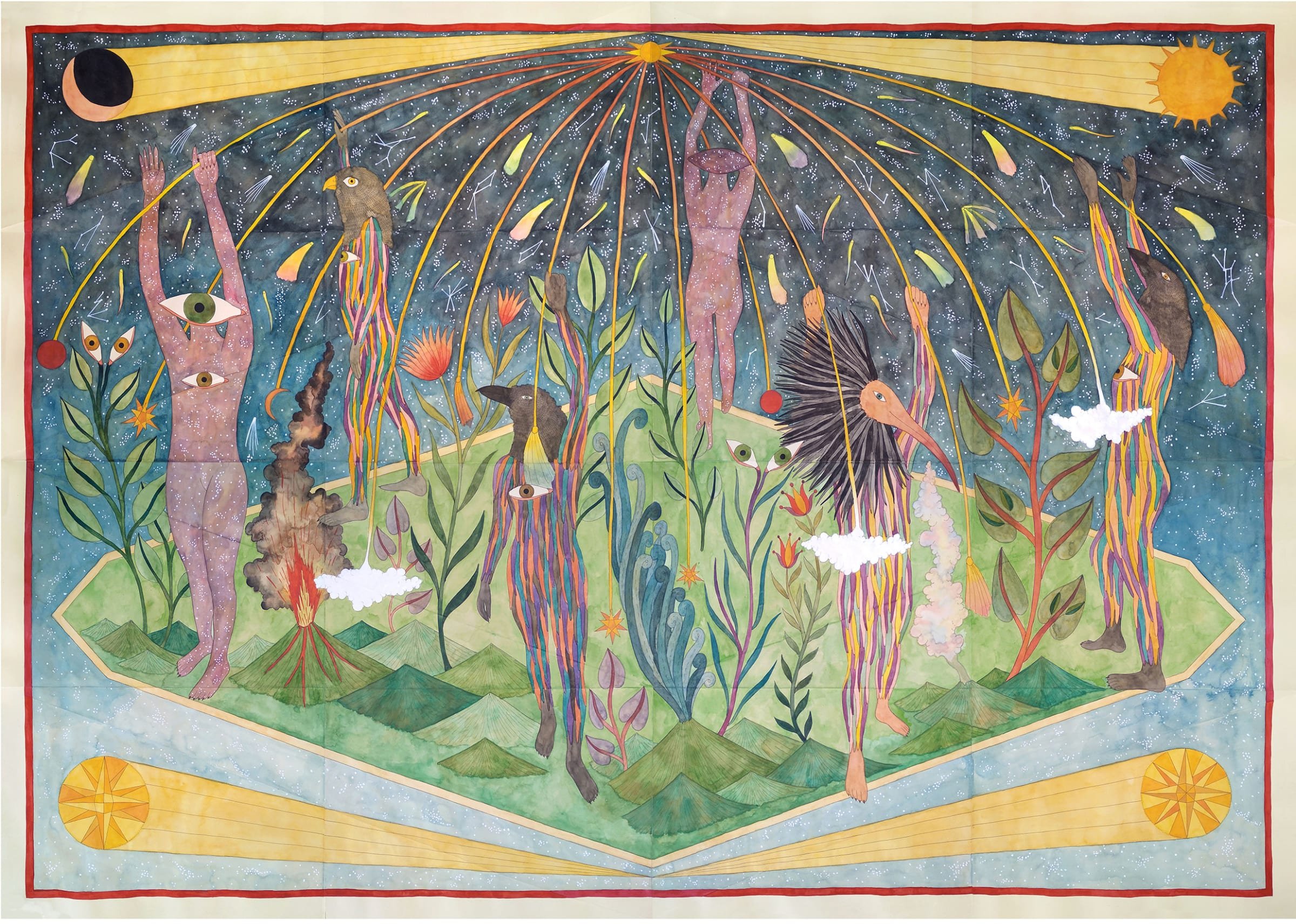
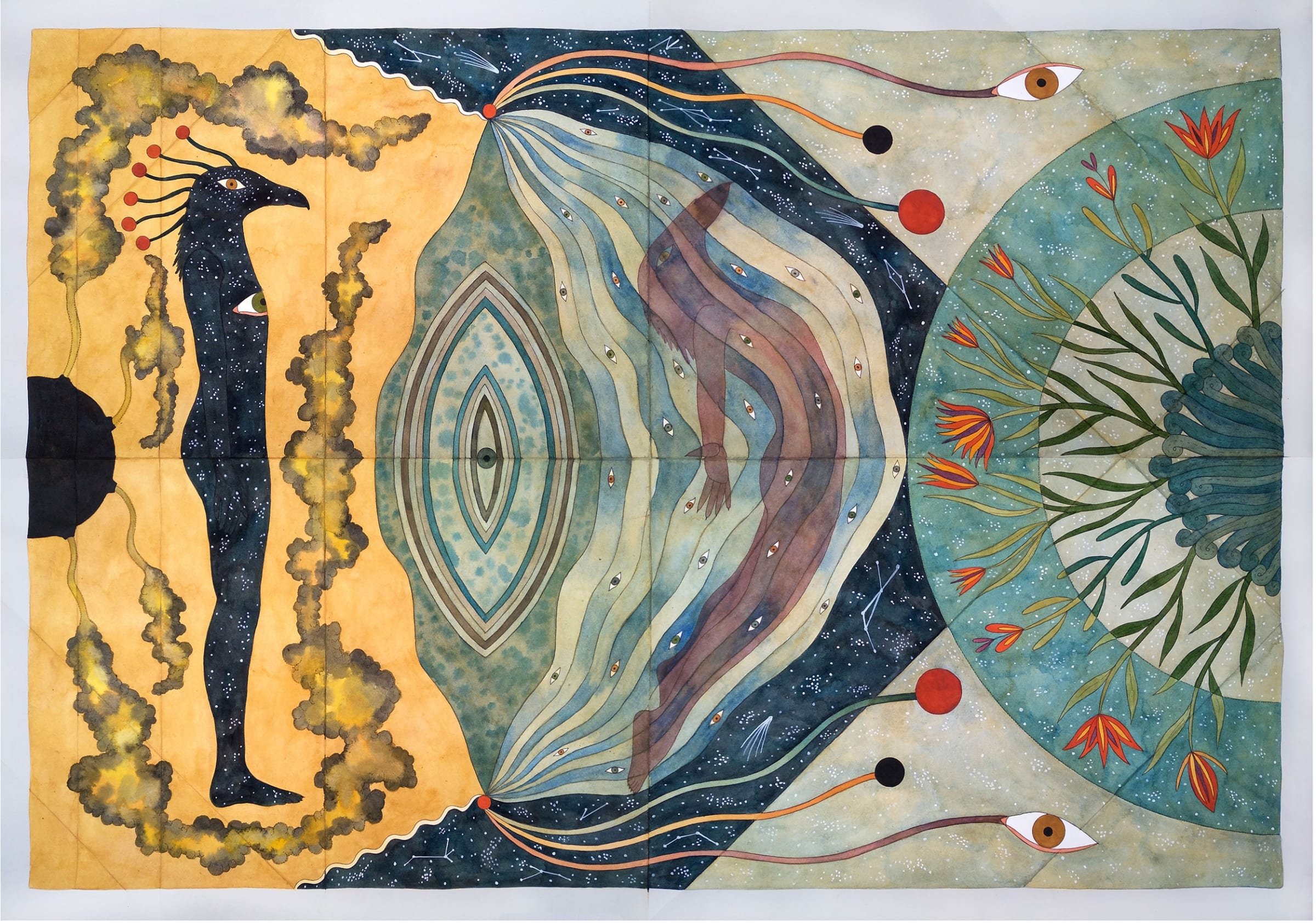
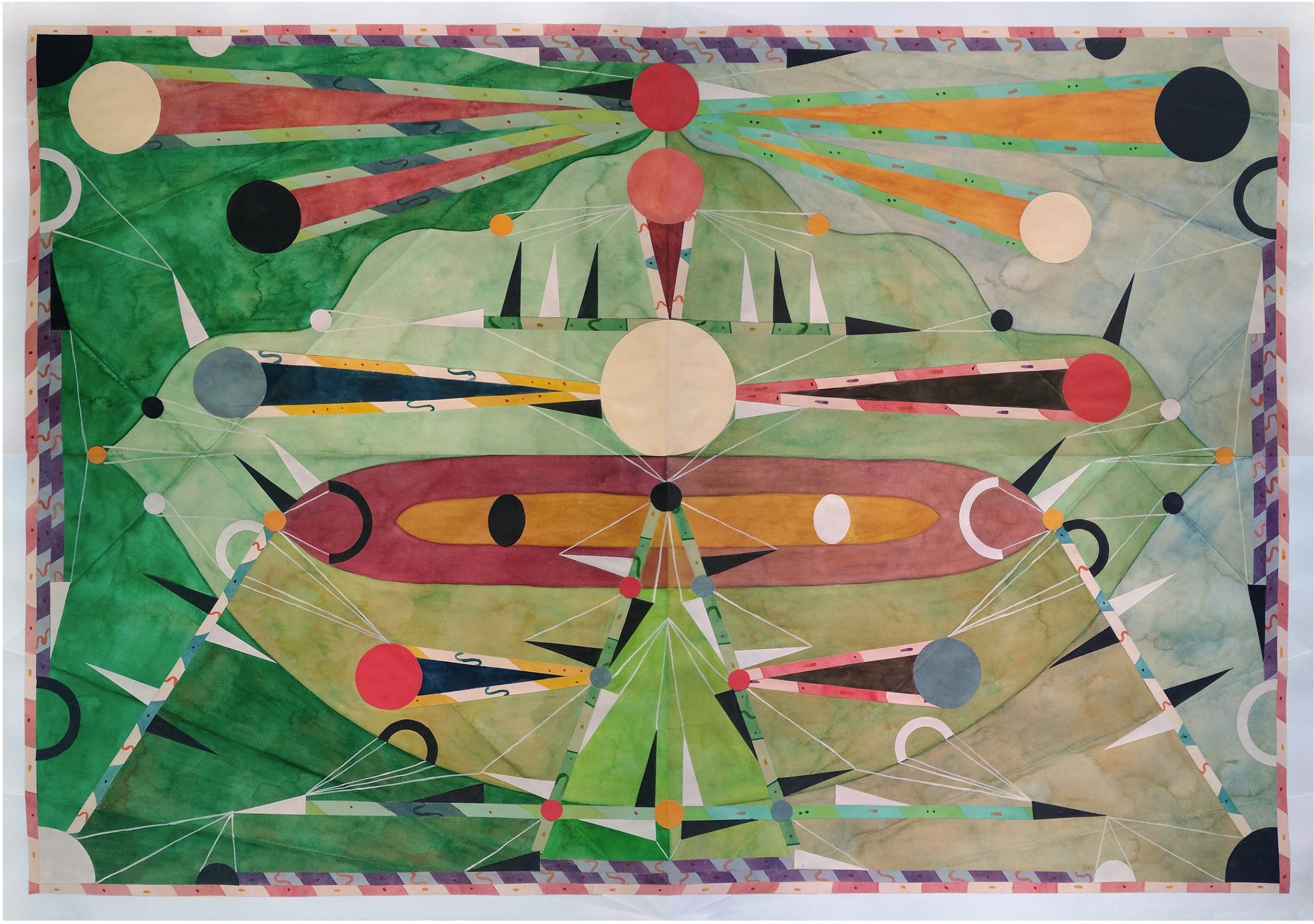

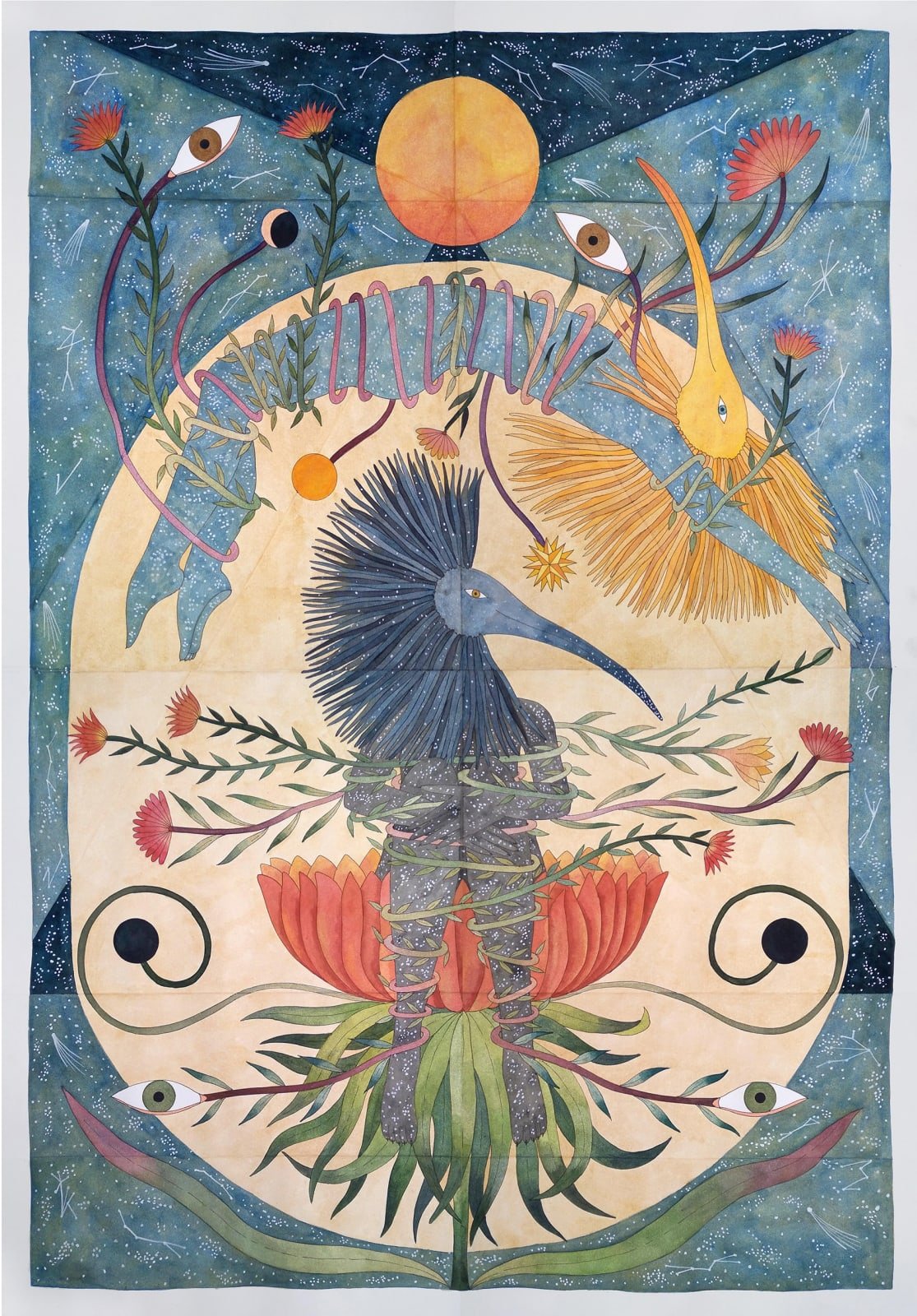
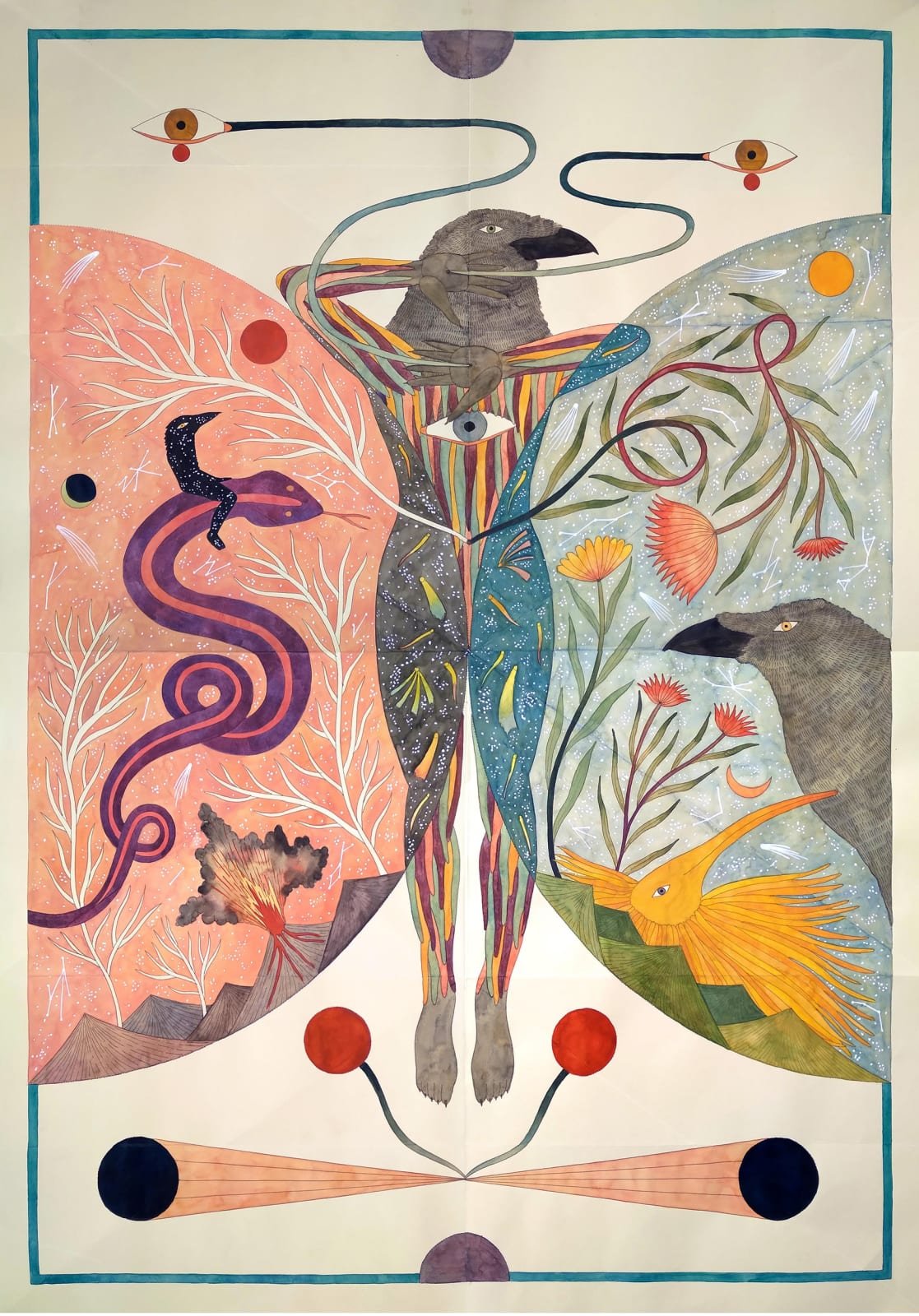

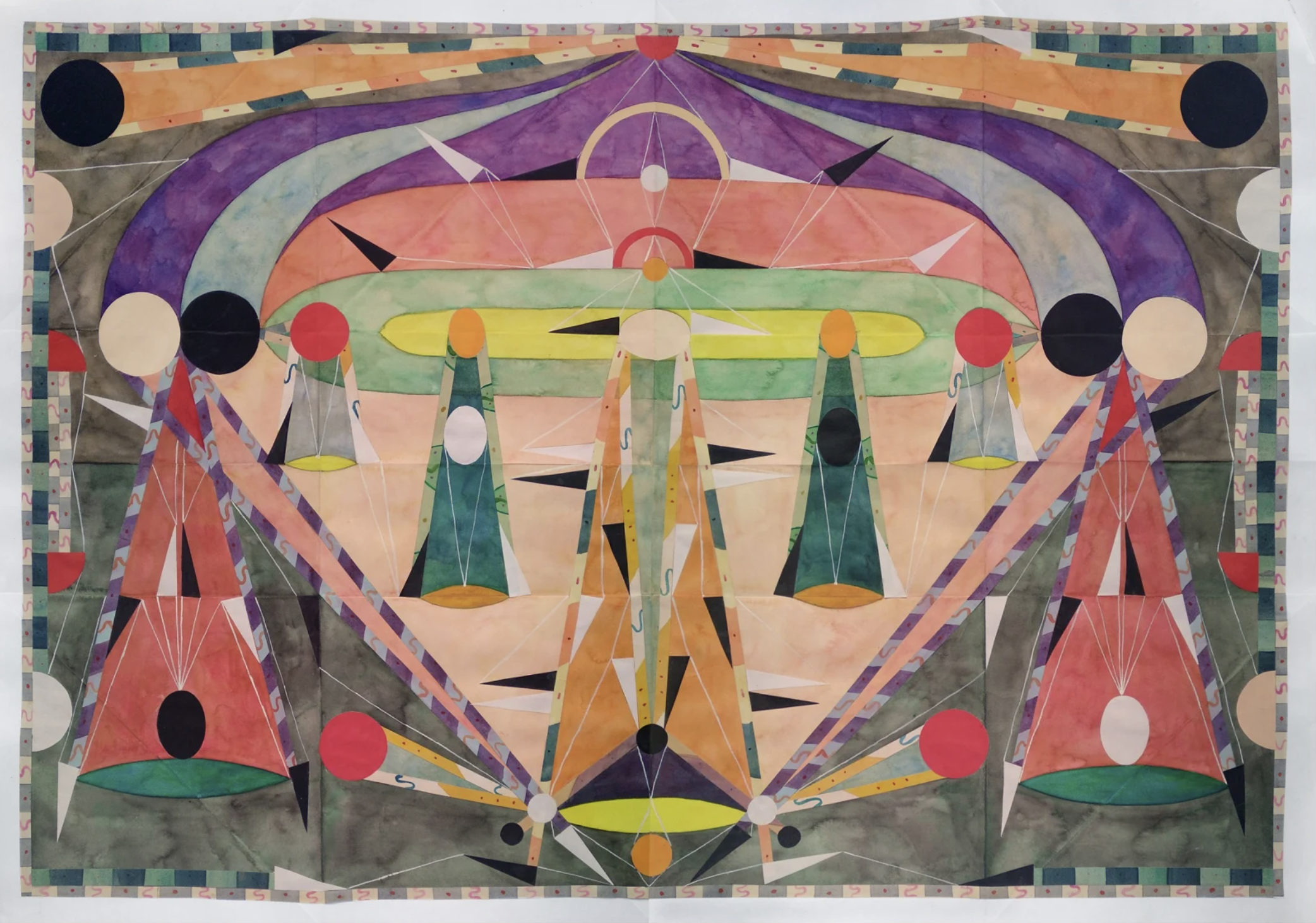
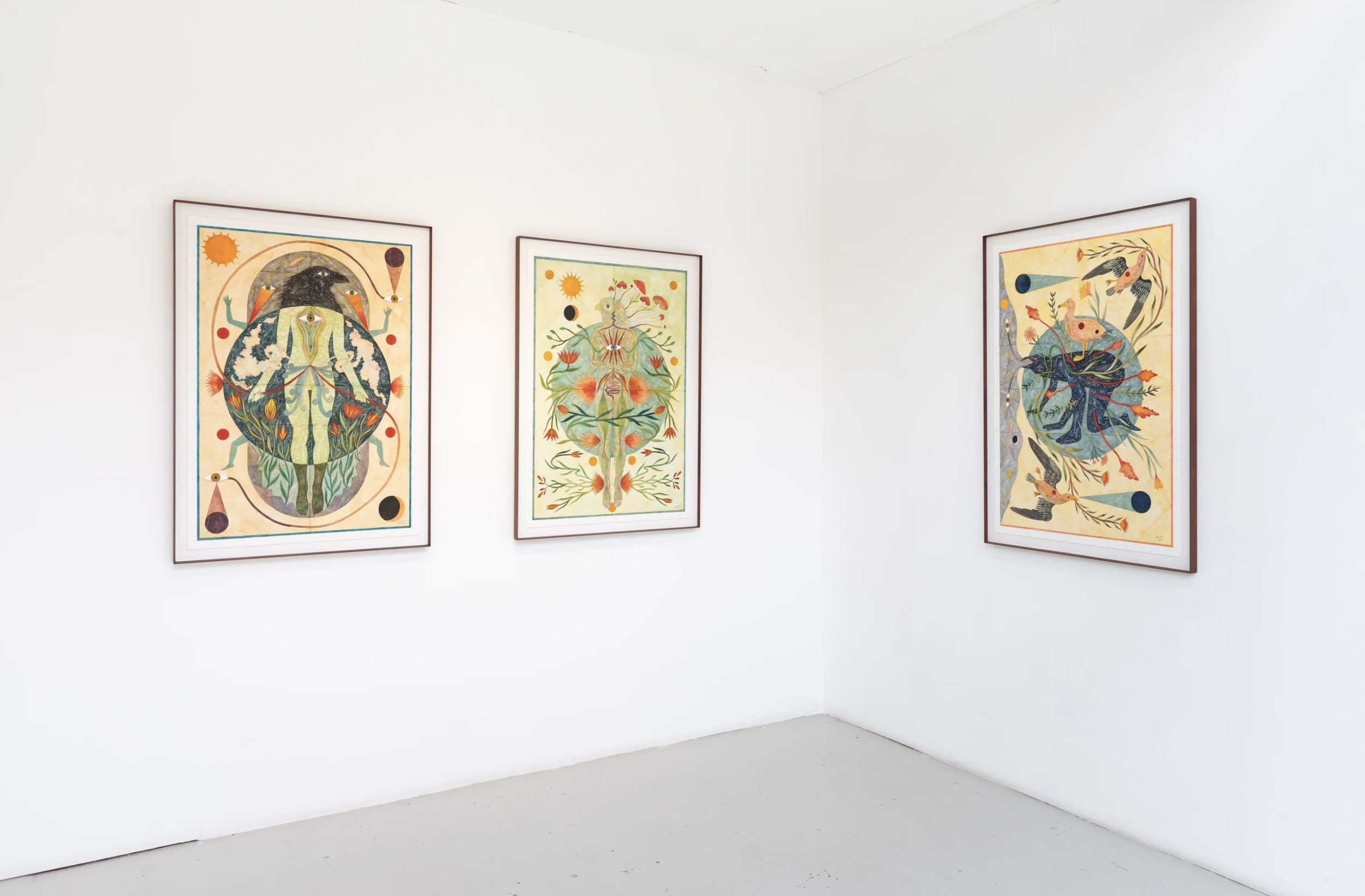
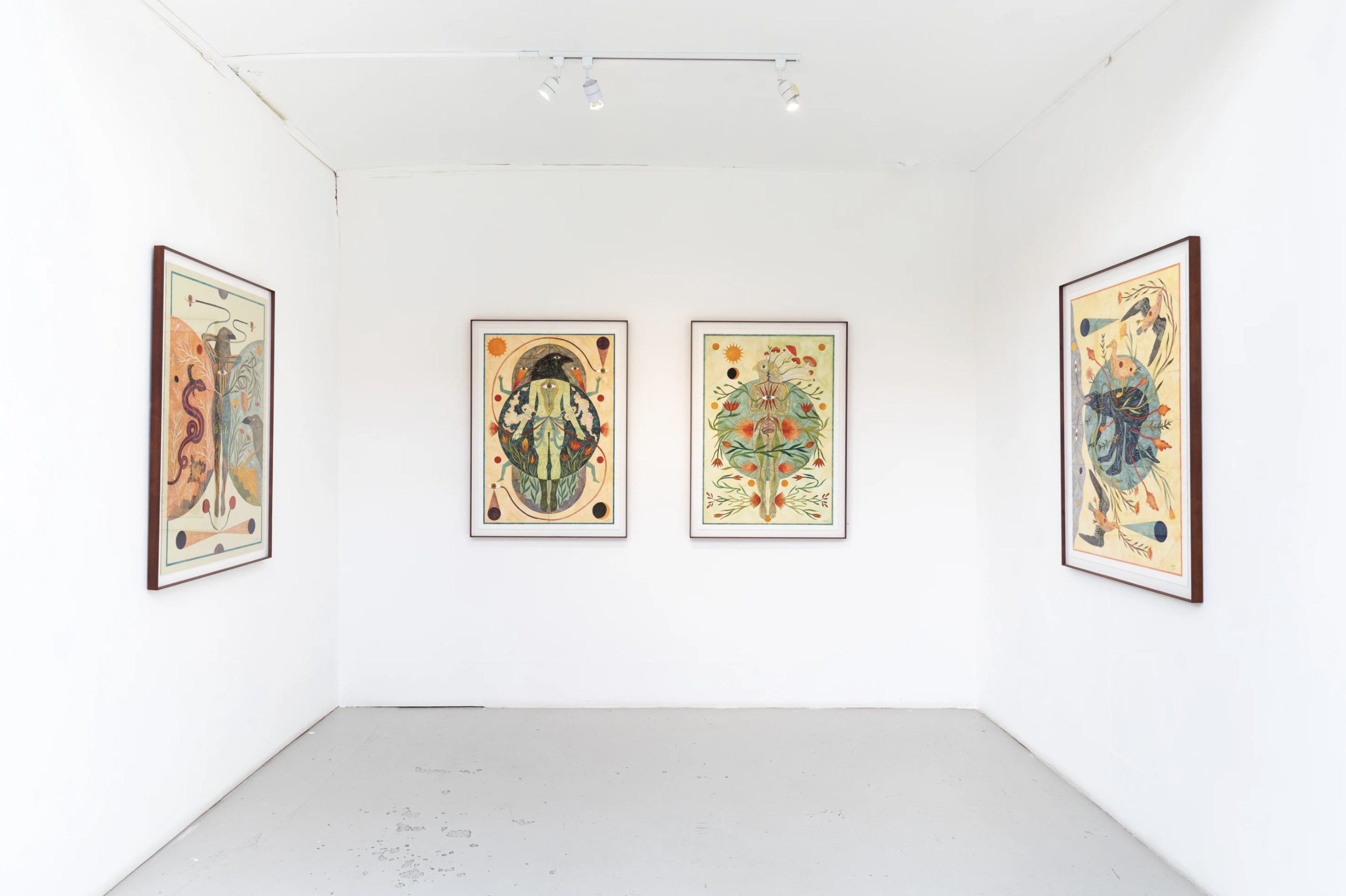
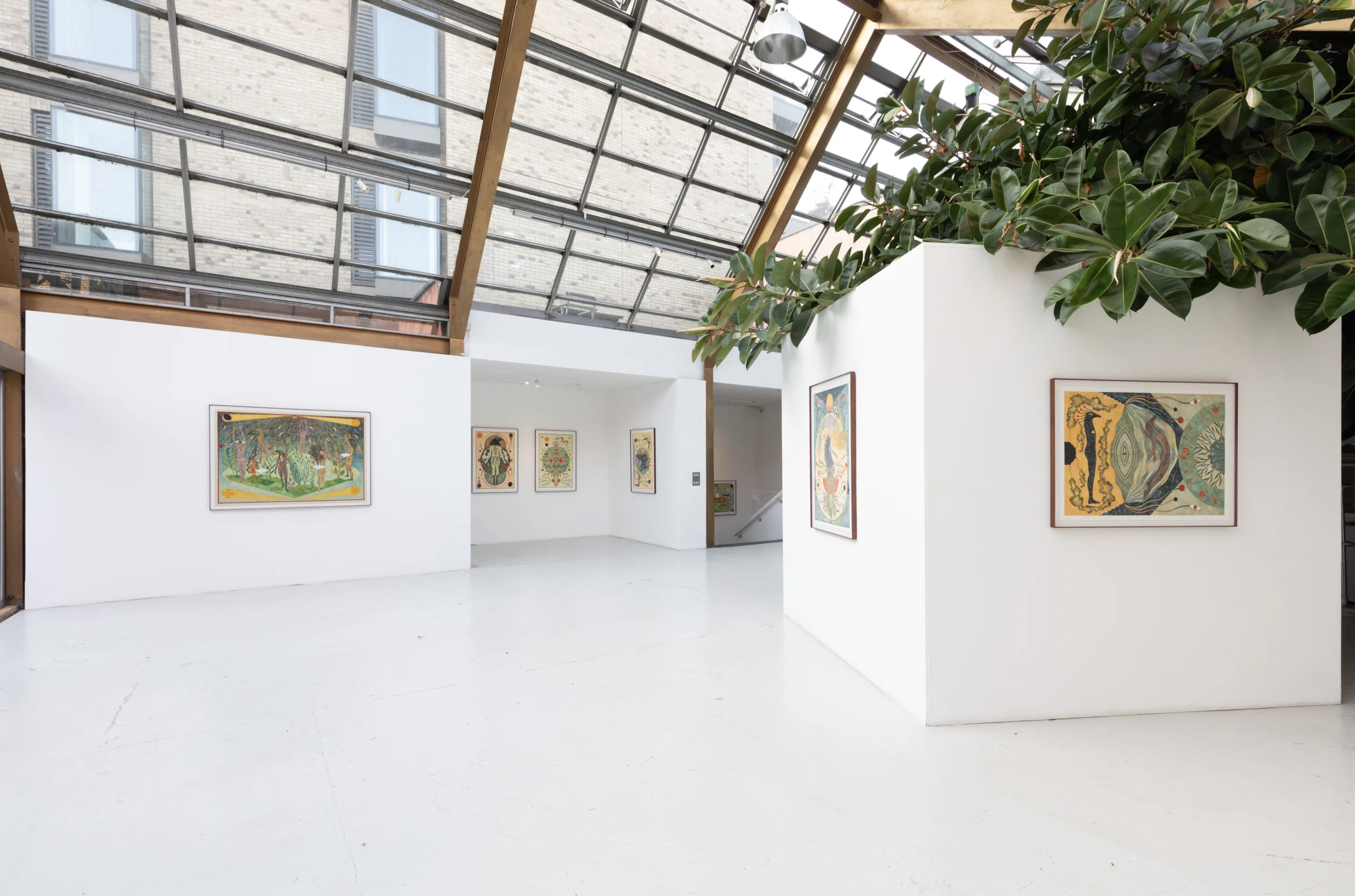
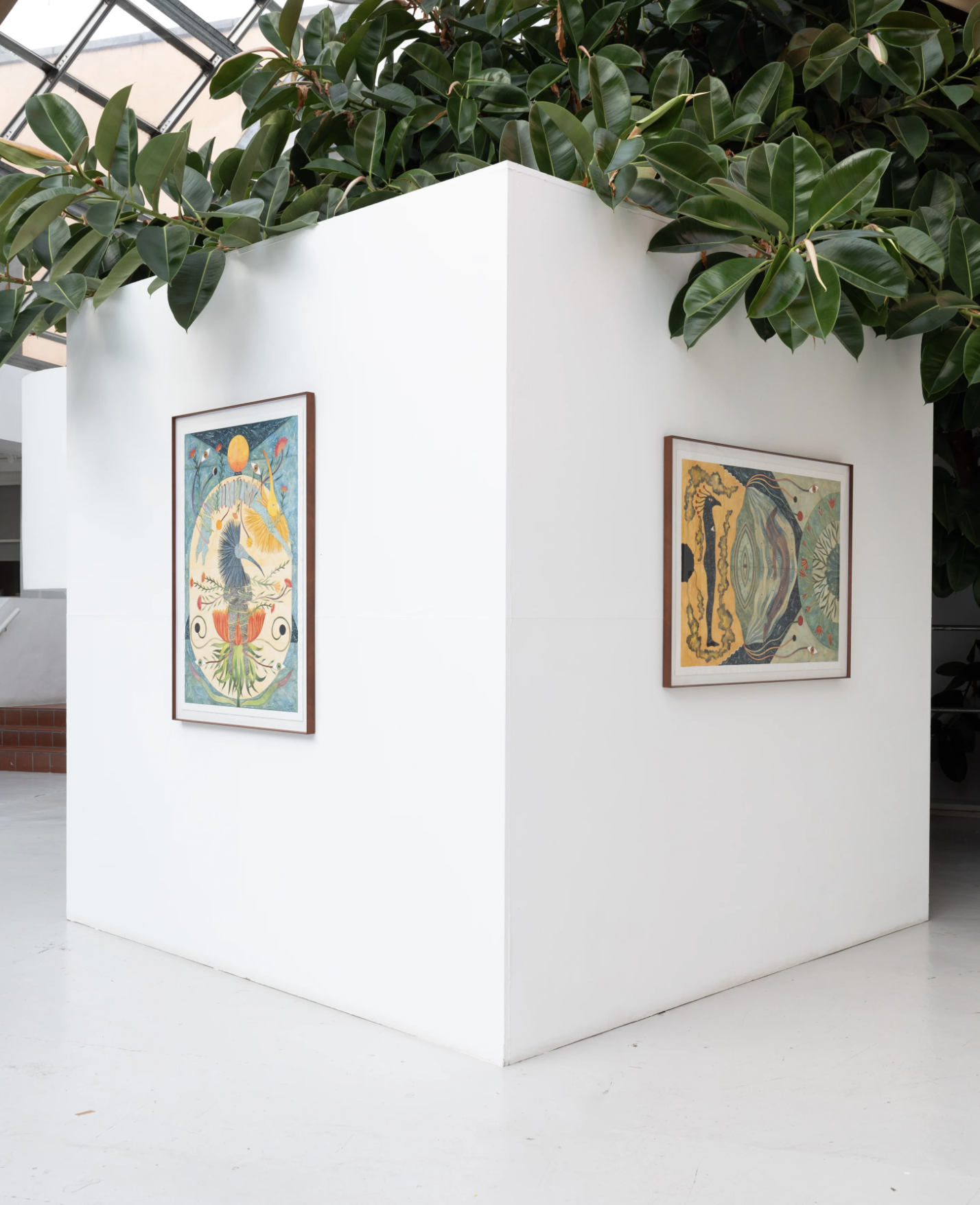
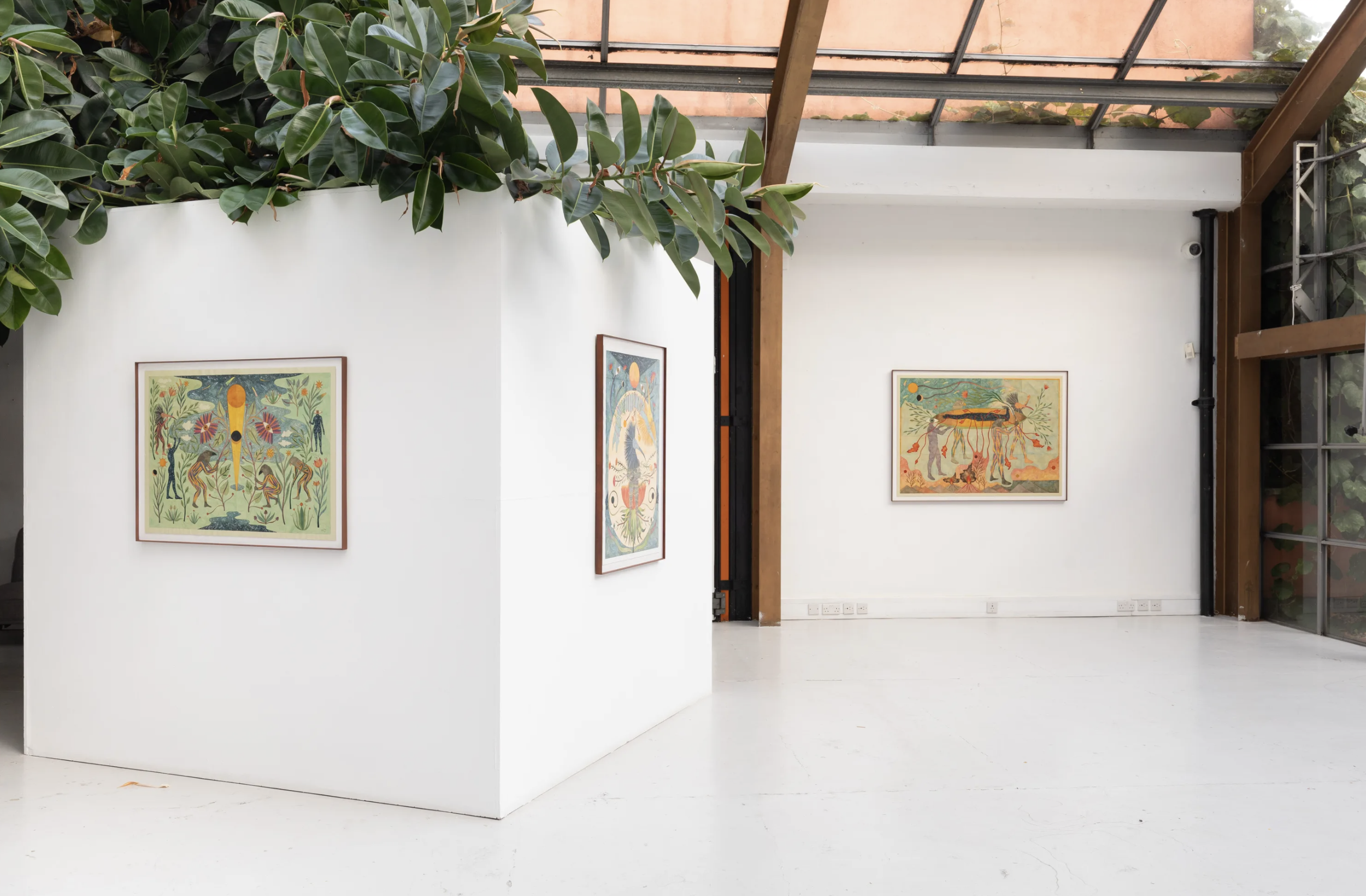
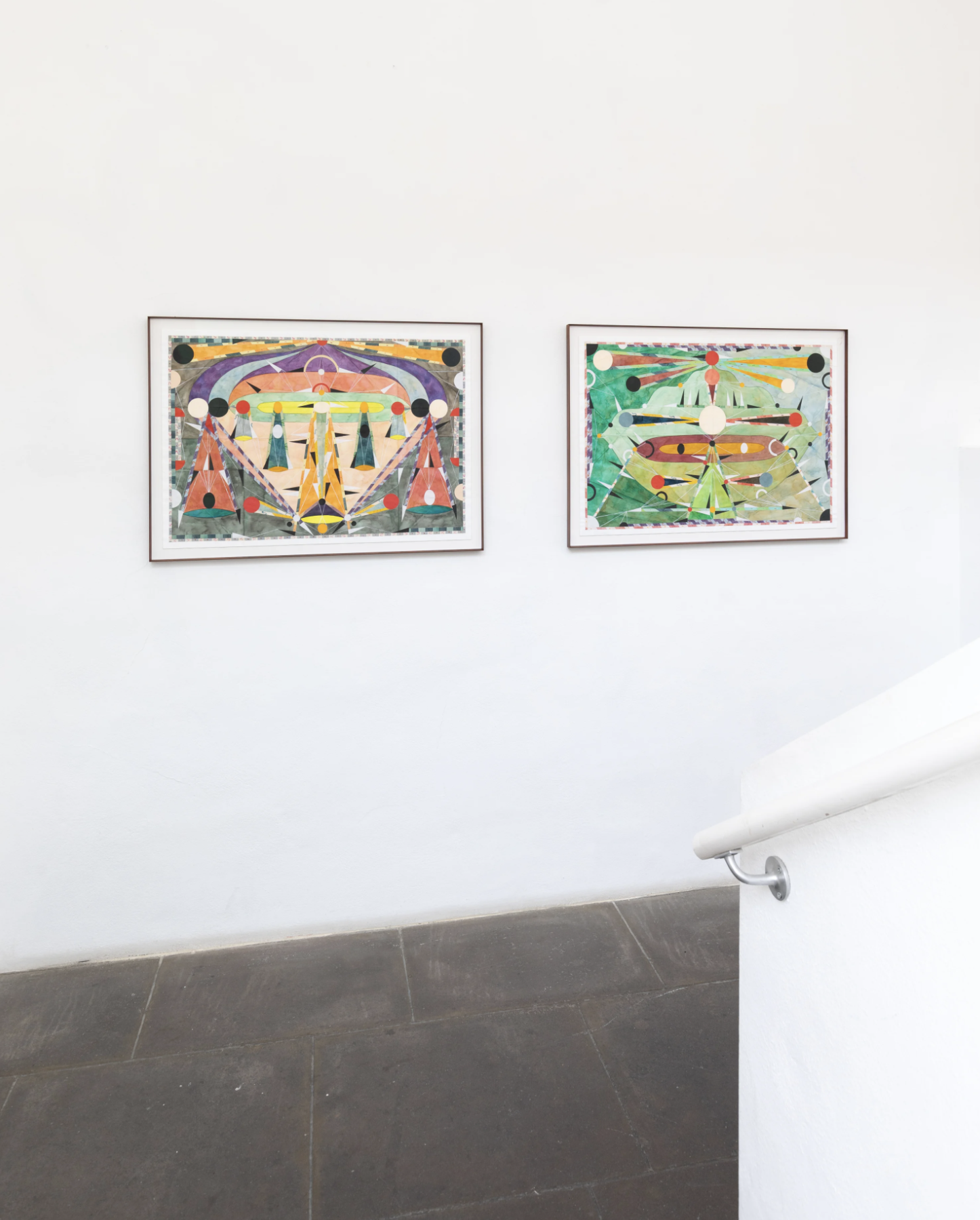
Terraformation, Rithika Merchant’s solo exhibition at Kristin Hjellegjerde Gallery, London Bridge, imagines a future after the destruction of the Earth when humanity is beginning to build an alternative world and invent new ways of living. Within this state of powerful transformation and creativity, we encounter vast, unfolding vessels composed of bold geometric shapes, hybrid creatures engaged in ritualistic practices and alternative methods of healing that harness the powers of nature.
This series of works is the latest development of an ongoing narrative in which Merchant draws on her imagination and the ancient knowledge of nature to consider how humanity might leave behind traditional ways of existing to evolve across different spaces, times, and dimensions. Her creatures, in their various guises, can be seen as proxies for us, caught in various stages of becoming. In Cosmic Crucible, for example, the recurring figure with the head of a vulture – a representation of humanity in its current state – is pictured passing through a portal that seems to separate the polluted past and a more fertile future. This process requires the figure to relinquish not only their current environment but also their physicality – as they move through a kind of nebulous membrane, they are rendered weightless and transparent. The motif of the eyes floating within space and attached to tentacle-like tendrils, meanwhile, are, as throughout Merchant’s practice, symbols of a higher consciousness. In this way, the work can be seen not only as a literal imagining of a voyage to a new world, but also as a psychological journey towards greater peace and enlightenment.
Similarly, the painting titled The Requiem depicts the death of the body while also signalling an entrance into a new kind of life. Red-painted tendrils extend from the deceased figure, some reaching down to a landscape defined by barren trees and erupting volcanoes while others appear to have been severed from that vision. There is a joyousness to the scene – the platform on which the body lays is sprouting flowers while the surrounding characters carry branches and celestial orbs. They are, perhaps, guides from another planet, leading the body on its first steps to rebirth.
‘My work is an act of self-soothing, a way of helping me to see hope in the future,’ says Merchant. That hopefulness is found in and described through nature. Her creatures appear wrapped in vines and leaves, while the desaturated colour palette, interspersed with more vivid hues, recalls the aesthetics of botanical illustrations. Plant Medicine, depicting a deity-like figure growing plants and mushrooms, makes the most direct reference to this idea of healing, with mirrored imagery and a central circular motif symbolising balance, but it is also conveyed in complex works such as The Albatross. Here, like in Cosmic Crucible and The Requiem, we encounter a creature caught in a state of transformation – the matter spilling from its mouth perhaps representing the purging of its past life, while the birds are symbols of good luck as well as mediators between the earthly and spiritual realms.
In these works, Merchant is playing on the scientific idea of terraforming – of deliberately modifying the atmosphere and ecology of another planet to make it habitable for humans to live on – to not only remind us of our ability to influence the environments that surround us, but also that we have the power to change things for the better by reflecting on our past behaviours and drawing on the wisdom of the natural world. Each of these delicate paintings is an invitation to think more imaginatively, to welcome transformation and to seek more harmonious ways of living.
